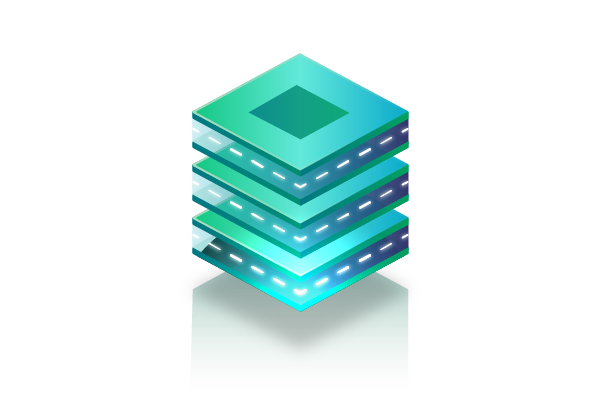The OSI Model, often referred to as OSI (Open Systems Interconnection), is the very basis of networking and is recognized across the globe for its universally accepted framework, which provides a conceptual language and standardization for the numerous interactions between systems and devices. Therefore, the OSI model, which consists of seven layers, acts as a target beacon, showing possible functionalities that will help facilitate and organize smooth information dispersal between multiple different networking systems. Fundamentally, the OSI model has physical connectivity as well as a sophisticated part of the choreography to permit applications to be able to exchange data on networks.
In the present article, we begin a journey discovering the OSI model that will lift the curtains and allow an insight into the workings of modern network structures block by block. We examine the functionalities of each layer according to their linkage with each other, as they play the main role in providing solid and reliable communication lines amongst the interfacing gadgets as well as systems. Right from the physical sublayer to the user-aware application sublayer, our discussion will cover the intricate details of network communication, allowing us to dive deeper into the fundamental mechanisms and protocols that make data transmissions smooth within the digital world.
What is OSI Model?

The OSI (Open Systems Interconnection) model is the most commonly used and widespread paradigm in the field of networking and serves to clarify and standardize the process of communicating between devices and systems. It is composed of seven specific layers that are in reference to different implementational specifications, data control and data transmission effectiveness through heterogeneous networks. At the bottommost layer, which is called physical, procedures and principles that correlate to hardware are provided – transmission’s means, media, and signals are some of the examples. Taking the role in the hierarchy, the Data Link Layer (referred to as DL) is in charge of regarding data packaging into useful synchronous entities known as frames, as well as with some error-correcting mechanisms for errors that may arise in the process of transmission over the medium. Otherwise, the network layer takes on the role of a mastermind by using algorithmic sophistication to find the shortest route and equivalent methods to handle traffic overcrowding.
The Transport layer is located next to the network layer, which serves the purpose of accessing a complete set of information from source to destination, including data sequence responsibility and controlling data flow. The splitting of data units to be transported and their reorganization at the destination are the main elements of the packetizing mechanism. As a result, capabilities for error recovery and congestion avoidance are built into the structure to deliver a reliable data stream. At the level of the transport layer is the session layer, which describes how to start communication and manage the interconnection between applications. This layer also facilitates data exchange between systems. This IP layer deals with issues such as the start and pause of sessions, synchronization, and termination to maintain the connection between different network entities.
Also Read: Top 5 Layer 1 Crypto Projects Stand as Pillars of Innovation in 2023
One more level up on the OSI stack, the Presentation Layer will perform the task of data rendering, in which the data is represented internally in a standardized format that can be carried over the network. It serves a variety of functions, ranging from data encryption, compression, and protocol conversion, thereby reducing data interference and making the process of exchange securer and faster.
Following the last layer, which is the application layer of the OSI model, is the layer that serves as a communication medium between users and the network and allows access to an abundance of different network services and protocols. The third type of ‘web application layer’ is composed of a wide set of applications that respond to the various needs of users in digital life, such as web browsers and email clients, transfer protocols, data and remote services.
As for the OSI model, which acts as a conceptual mechanism for understanding and designing network architecture, it has to be taken into account that real-world networking does not remain strictly within the hierarchical structure of OSI. In place of the old OSI layers that are sometimes not well defined, present day network protocols mostly use TCP/IP, which brings together features to help communications processes run very well and optimize the performance of the network. On the contrary, the OSI model is a quintessential educational tool for network engineers and administrators, giving into the bottomless abyss of network communication characteristics and remaining an essential foundation for the emergence of solid, versatile and interoperable network backups.
What Are The 7 Layers Inside of the OSI Model?

The OSI (Open Systems Interconnection) model is made up of seven levels, each of which presents a given part in the process of communication. Understanding the layers involved in such data transmission is key to comprehending how the process works. Here’s a detailed breakdown:
1. Physical Layer
Here comes the first and most fundamental layer, which has to do with the material or physical aspects of network communication. This component is used to convert a bit stream of raw data to go through different physical mediums that may range from copper wires, fiber optics to even wireless transceivers. It is there, in fact, where digital data is ascertained. This is then transformed into physical signals that can endure these networks’ mediums reliably.
For this closest layer, specifications tend to be about the likes of current levels (sometimes analog and sometimes digital), contending with cables, connecting speed, and having formats, e.g. shapes. For example the Physical Layer comprise of Ethernet cables, USB connectors and the even the wireless radio waves are all part of the Physical Layer. In general, it is the layer that allows a machine to connect to a wider network by providing the necessary hardware buttons for the data to move from a source to its final destination without knowing what is contained in the data or its structure.
2. Data Link Layer
Up in the Data Link Layer, primarily addressing the node-to-node communications with the different network components within the same subnet. Its main role is to make sure that Zadungi moves frames from one device to another without errors. To do this, the data link layer puts a header into the data frame in a fashion that contains such information as the source and destination MAC (Media Access Control) addresses. It does not only append a trailer on the trailer that consists of error detecting information.
It also permits the receiving gadget to detect and correct any errors that might have taken place during transmission. Further, this layer provides an intermediary between the network and the different mediums of data transfer using protocols like Ethernet or Wi-Fi, thus avoiding collisions and ensuring that data is delivered reliably between devices in the same network segment. In a nutshell, the Data Link Layer itself could be perceived as the real link between the physical layer below it and the physical layers above it that others would call the network layer, which again even allows for advanced features like the network layer.
3. Network Layer
This critical layer is the one that involves the core routing and forwarding that packets of data move through among various networks. It functions as the starter or the main thrust of the internet, organizing the orderly operation of imported data from the myriads of networks. To put it simply, the Working Layer follows an intricate routing scheme that takes such factors as network traffic, priority, and QoS requirements into account to come up with the optimized data path. The Network Layer, being the primordial one among all, also enables packet logging, which is done using IP (Internet Protocol) addresses.
Through them, computers are able to pinpoint each other by unique ‘address numbers’ or IDs, which allow the source and destination devices to route their communication across various types of network structures. In addition, the layer of the network transforms the information packets that different types of transmitting devices understand into protocol frames, which are the basic components of the communication network, and maintains the reliability of the data during delivery to its destination. With protocols such as IP, ICMP (Internet Control Message Protocol), or route- protocols such as OSPF (Open Shortest Path First) and BGP (Border Gateway Protocol), the function of the network layer’s attention in the delivery of global connectivity and enabling efficient data exchange on a large scale plays a profound role.
4. Transport Layer
Being logically situated directly above the Network Layer, the Transport Layer functions as a catalyst for unifying end-to-end request messages between two engaged devices. The theme is ensuring that the data is smoothly and effectively transferred through the networks. By the way, the Transport Layer is responsible for segmentation, which is why big streams of data are broken into manageable units and then transmitted. In this case, symbol codes are generated individually for each segment, and then header information containing the sequence numbers and checksums is used to detect and recover errors.
Notably, the Transport Layer offers two prominent protocols: Transmission Control Protocol (TCP) and the User’s Datagram Protocol (UDP) network layer. TCP is a connection-oriented protocol that helps to maintain the reliability of data delivery through mechanisms like acknowledgment and recovery of lost or misplaced packets. Meanwhile, UDP has a connectionless mindset that stresses fast and efficient datagram transmission at the cost of reliability. Such is mainly demanded in endeavors involving real-time multimedia streaming applications and internet gaming where the packets can be slightly lost without connection failure. Besides, the layer accomplishes the tasks by means of its powerful error recovery mechanisms, flow control, and multiplexing capabilities. Consequently, the transport layer is the key element that keeps the internet offering a variety of applications and services, hence ensuring smooth operation.
5. Session Layer
Furthermore, the Session Layer sits between the Transmission Layer and the Application Layer, and the responsibility of the Session Layer includes the establishment, maintenance, and shutting down of sessions between applications. However, its fundamental duty is to find a way to harmonize and synchronize connecting devices in such a way that data is transferred efficiently and quickly.
At the Session Layer, the session is initialized and negotiated in order to establish a communication session between the applications being considered. In addition to this, when the communication session is complete, session termination will be effected.
It is also in charge of the synchronization and session by making sure that the proper order and time of the performance of actions between parties are used. Furthermore, this layer brings unified error recovery and retrying when sessions get interrupted or fail. This packet-oriented protocol actually transforms the application environment into one single network for all data exchange between devices, which is definitely improving all the wireless network communication regarding robustness and efficiency.
6. Presentation Layer
Sitting over the Session Layer, is the instantaneous and primary emphasis of the Presentation Layer on data representation and transformation. The main task of this modem is to convert, clear, and compress data to provide device-to-device compatibility and security for data through the communications process. The Presentation Layer takes care of tasks like data formatting, character coding and data compression to make sure that the data sent by the application layer corresponds to a format that the receiving system can “read”. It also has key roles in data encryption and decryption. That is to improve security and privacy, especially in situations where you have to keep your communication secret.
The processing layer enables data compression algorithms to be applied to maximize the use of bandwidth and deliver information efficiently. The Presentation Layer is responsible for standardizing the data formats used by the network and offers encryption and compression services to enable reliable interoperability and security-based communication. This is done by ensuring that data is transmitted reliably and securely between different computing systems.
7. Application Layer
Sitting at the very top of the OSI model is the Application Layer which functions as an interface between the network and the application installed on the user’s machine. It offers a service set directly tailored to application needs, ensuring that user applications know how to use and locate network resources and communicate with other applications across the network.
The layering application stage is said to signify the wide variety of protocols and services that exist, with each of them being uniquely crafted to meet specific application needs. Alternatively, protocols like HTTP (Hypertext Transfer Protocol) facilitate browsing the web, SMTP (Simple Mail Transfer Protocol) ensures that email is possible; and FTP (File Transfer Protocol) allows devices to transfer images or any other file. Along the way, the Application Layer offers a wide array of support services, ranging from remote access to directory services to network management, responding to increasingly complex and sophisticated demands of data flow.
Benefits of the OSI Model

The OSI (Open Systems Interconnection) model offers several benefits that contribute to its widespread adoption and utility in the field of networking:The OSI (Open Systems Interconnection) model offers several benefits that contribute to its widespread adoption and utility in the field of networking:
Standardization
The strong side of the OSI model is that it serves as a unified platform that all computer network communication industries can use. Modeling the network concept by defining 7 different layers, each having unique functions and responsibilities, empowers a common language and makes way for various networking principles.
Through those principles of standardization, network technologies, which were unique in the past, can now communicate and cooperate seamlessly with each other. Since there is such consent and a universally accepted framework that is referred to as the OSI model, vendors, developers, and network engineers can ensure that their products and their solutions correspond with a set of fundamental elements and accepted principles, therefore, attaining compatibility and consistency in the networking ecosystem.
Also Read: Top 10 Fastest Blockchain Platforms in 2024
Modularity and Scalability
The hierarchical nature of the OSI model ensures scalability and modularity in application development and connection in networking. Every layer of communication is built to work on a particular subset of the process, so protocols and technologies may be developed, deployed and modified at each level, respectively. Through this modular approach, network managers are able to upgrade or expand the network without incurring the cost of total system replacement.
Such a practice is depicted in a situation where an implementation of a new technology or protocol can be easily accepted by the network since the architecture is able to accommodate such protocols without changing the architecture or layers. Consequently, this increase in flexibility gives organizations the opportunity to change business needs, improve on their technological advancements, or add to their scalability over time.
Ease of Troubleshooting
One significant benefit of the structure of the OSI model is that it simplifies network troubleshooting and diagnosis. Layering of the interconnection as such puts more power into the identification of imprecise issues for network supervisors.
For example, in the event the slowness in connectivity is experienced, the administrators may use the OSI model to identify the specific layer that has the problem, whether such layer is the Physical Layer, Data Link Layer, or the Transport Layer. This chess-like unwinding procedure streamlines the process, achieves quicker problem detection, and highlights system efficiency in the operation and administration of networks. Besides, the standardized outlines and intermodalities of each layer guarantee the operation interconnectivity between various network devices, thus simplifying pinpointing problems.
Conclusion
The OSI (Open Systems Interconnection) concept is known as the ultimate model in networking, and it gives a structural way to visualize and classify the interprocess of communication between the device and system. The OSI model includes a seven-layer architecture that ensures efficient data transmission by breaking down various characteristics and network environments into various functionally assignable layers through seamless interoperable functionality.
The model has started with the Physical Layer, which deals with the hardware of communication. And the Data Link Layer, the Transport Layer, the Session Layer, Presentation Layer and finally the Application Layer are progressed step-by-step, and each layer is dependent on the previous layer functions.
The OSI model, with all its advantages like standardization, modularity, easier interconnection, simplicity during debugging, the development of protocols, and education and training support, still does not fit with the real networking technologies and structures. In terms of contemporary layer protocols, many of them being developed these days take into consideration the multi-layer approach that is made to enhance performance and eliminate unnecessary communication processes.
Disclaimer: The information provided by HeLa Labs in this article is intended for general informational purposes and does not reflect the company’s opinion. It is not intended as investment advice or a recommendation. Readers are strongly advised to conduct their own thorough research and consult with a qualified financial advisor before making any financial decisions.

In the role of a Hela writer, I weave stories that reveal the core of this revolutionary Layer-1 solution. Created in partnership with accomplished engineers, scientists, and A*STAR IHPC, Hela is tailored for real-world use
- Alifia Berizkyhttps://helalabs.com/blog/author/alifiabm/
- Alifia Berizkyhttps://helalabs.com/blog/author/alifiabm/
- Alifia Berizkyhttps://helalabs.com/blog/author/alifiabm/
- Alifia Berizkyhttps://helalabs.com/blog/author/alifiabm/

